
Soil is a complex system that is deeply interconnected with minerals, plants, and animals.
Its formation is a very slow process, extremely slow for human perception, and results from the interaction between the different forces present on this planet.
According to the Indian cosmological system, the Pancha Mahabhuta or the five great elements form the basis of any material manifestation. Within this system, it is described that the creation started with the element of space or ether (Akash), then came air (Vayu), then fire (Agni), then water (Jal), and then earth (Prithvi). Thus the element of Prithvi is a culmination of all the elements and cosmological forces.
The interplay between the Geosphere (rock or the parent material), Hydrosphere (erosion from flow of water), Atmosphere (erosion from wind), Biosphere (animals, plants, and microorganisms) and the Cosmosphere (sun’s energy manifesting as heat and temperature, and the effect of celestial bodies on several earthly elements) continuously creates and influences the soil and we can only observe this over long periods of time.
Rudolf Steiner, one of the most profound thinkers and visionaries of the 19th century, explains in his lectures on agriculture how the energy that human beings require for their consciousness to evolve will come from the food they eat. In essence, our spirit is linked to the spirit of the food. And the spirit of the food is linked to the spirit of the soil.
This is not difficult to understand for even the most scientific and analytic mind. A healthy human body requires wholesome food which can only grow in healthy soil.
Hence, anybody interested in the growth and evolution of their beings and consciousness needs to understand about soil and its interconnectedness with our lives through food.
Soil formation in different climates
Climate sets the template on which soil and vegetation communities evolve. In nature 1” of top soil can take a thousand year to form.
– Hot temperatures and high rainfall near the equator produce lush rainforests. The nutrients in such a climate are concentrated in the biomass of the ecosystem and not in the soil itself which is prone to leaching because of high rainfall.
– Moderate temperatures and rainfall in temperate latitudes support forests that produce organic-rich soil by dropping their leaves to rot on the ground. These soils are predominantly fungal in nature.
– Drier grasslands receive organic matter from dead roots and leaves and manure from animals and thus support soils with high organic matter and microbial activity. These soils are predominantly bacterial in nature.
– Arid environments typically have thin rocky soils with sparse vegetation.
What does soil contain?
Soil contains mineral particles and organic material which also contribute to nutrients in the soil. Healthy soil will have about 50% of its volume as empty space or voids. These empty spaces are where air and water stay. Thus healthy soil is like a sponge with a complex matrix of mineral particles and organic material bound together by bacteria and fungi into micro and macroaggregates. This is called the soil structure.
A good soil structure ensures:
1. That the microbial life can grow and thrive enriching the soil and facilitating nutrient cycling.
2. That the plant roots go deep in the soil and can access water and nutrients also from lower layers of the soil.
3. Water (from rain or irrigation) can infiltrate the soil and stay there so that it is available to the plants when they need it.
Healthy soil
The health of the soil has come to be seen from a very narrow perspective in the last century by giving importance to only some macro and micronutrients. This is the same thinking which has reduced human health to numbers and standardised measurements.
The health of the soil depends on the health of its ecology- its microbial diversity and population.
If a soil has a good diversity of microbes and a good number of them, it will naturally develop a good structure, a balanced nutrient profile, high water infiltration, resistance to pest and diseases among other qualities necessary to maintain and grow its fertility.
SOIL FOOD WEB

The health of the soil is dependent on many elements that make up soil. A healthy soil will be of a good structure to hold air and water, rich in nutrients and thriving with life. In a handful of healthy garden soil, there are more than a billion bacteria of several hundred kinds, about ten thousand protozoa, fungi, and several nematodes and microarthropods. These, together form the soil food web. These are the decomposers and nature’s solution to recycling the biological energy on earth.
Scientifically, the study of soil life is still new and the majority of these organisms have yet to be identified and named. What is known so far is the relationships the soil microorganisms share with the plants and some of the ways in which they interact with their environment.
Plant-microorganism relationship
Plants and soil life have a very strong symbiotic relationship. They depend on each other for their survival. Up to 30% of the food that plants produce during photosynthesis is exuded out of their roots into the soil to feed the soil life, which in turn decompose organic matter and release plant-available nutrients. Plants depend on this plant-microbial bridge for up to 85-90% of the nutrients and trace elements they require for healthy growth. The microorganisms also extend the effective root system of the plants accessing water and nutrients from a wider network below the soil.
Decomposition
Bacteria and Fungi decompose all the organic matter in the soil to release plant-available nutrients and create humus. The higher trophic levels in the soil food web feed on Bacteria and Fungi and also help release the energy stored in their bodies.
There are also studies that confirm that the soil food web helps decompose toxins in the soil.
Chelation
Bacteria and fungi release organic acids that mineralize rock particles in the soil thus continuously weathering rock, building soil and adding minerals to it.
Aggregation
When bacteria grow, they produce glues in which they bind soil and mineral particles, organic matter etc., forming micro-aggregates. Fungi, with their long strands and webs, bind these micro-aggregates together to form macroaggregates.
Thus, bacteria become the bricks and fungi become the mortar of a good soil structure.
Good structure will help retain water in the soil reducing irrigation needs and allow plant roots to go deeper making them healthier.
Health
A diverse set of aerobic microbes in the soil will outcompete disease-causing bacteria and fungi.
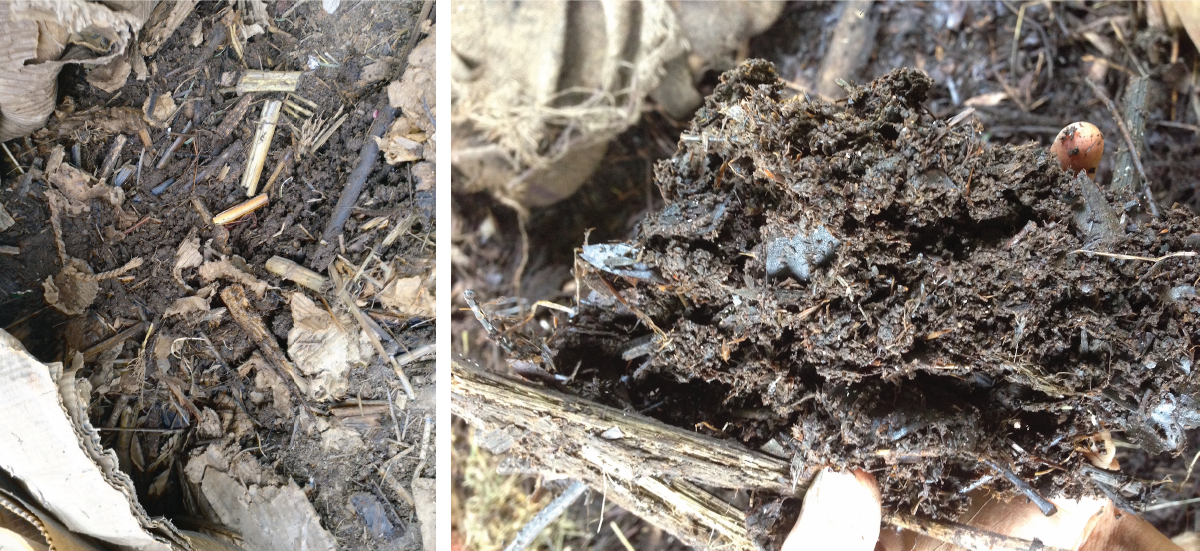
To maintain a healthy soil food web, it needs to be kept fed. This can be done by:
- Ensuring no land is left fallow
- Growing a diversity of plants (diversity above correlates to diversity below)
- Adding compost
- Adding mulch and organic matter
ACCELERATING SOIL FORMATION- BUILDING HUMUS
Some soil scientists believe that it takes over a thousand years for 1 inch of topsoil soil to form. While this may be true in natural systems, where soil formation and erosion balance each other, the process of topsoil formation can be accelerated dramatically by adding organic matter and diversity of microorganisms.
A healthy soil food web sequesters atmospheric carbon (gas) and sugars exuded by the roots (liquid) and preserve it in the soil as humus (solid).
Humus is a highly complex form of carbon linked to other elements and nutrients. It is a result of repeated decomposition of organic matter, where, while some carbon is reduced into simpler forms (catabolic process), some of it keeps on building into more and more complex forms (anabolic process). Humus, due to its low specific weight and high surface area, builds good soil structure and increases its capacity to hold air, water, and nutrients.
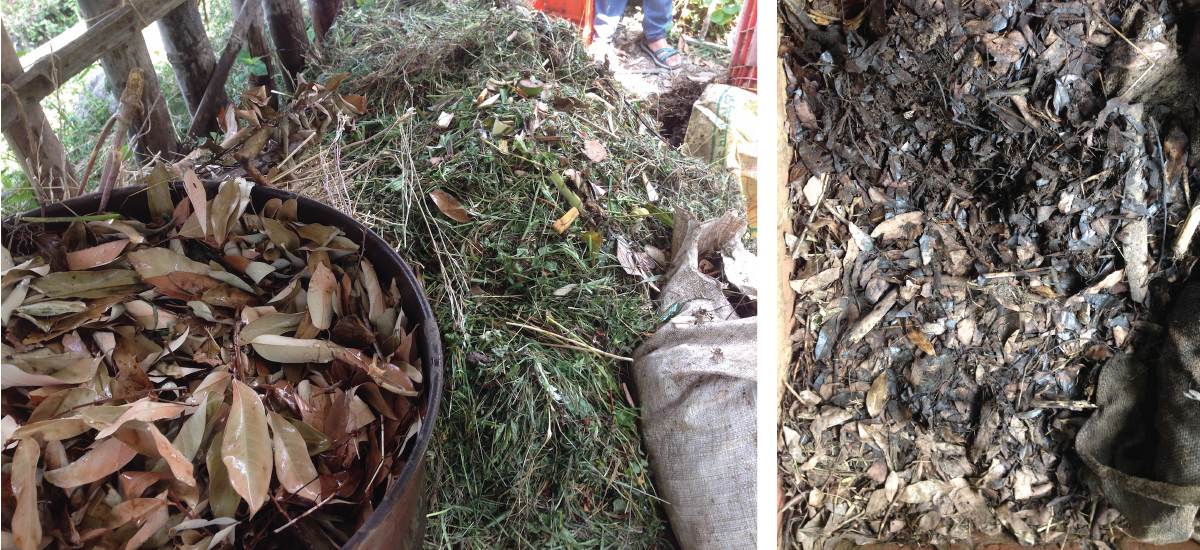
Dr. ELAINE INGHAM
The scientific understanding of how the soil food web works and how we can work with it to create healthy ecosystems comes from decades of research and experimentation of Dr. Elaine Ingham, an American soil microbiologist.
http://www.soilfoodweb.com/
https://environmentcelebration.com/
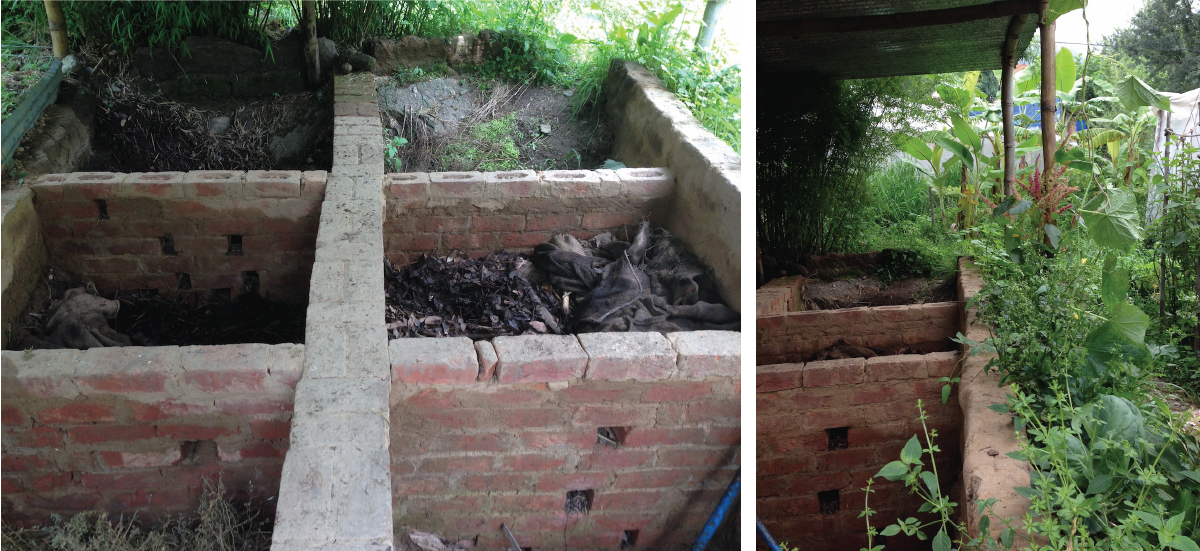
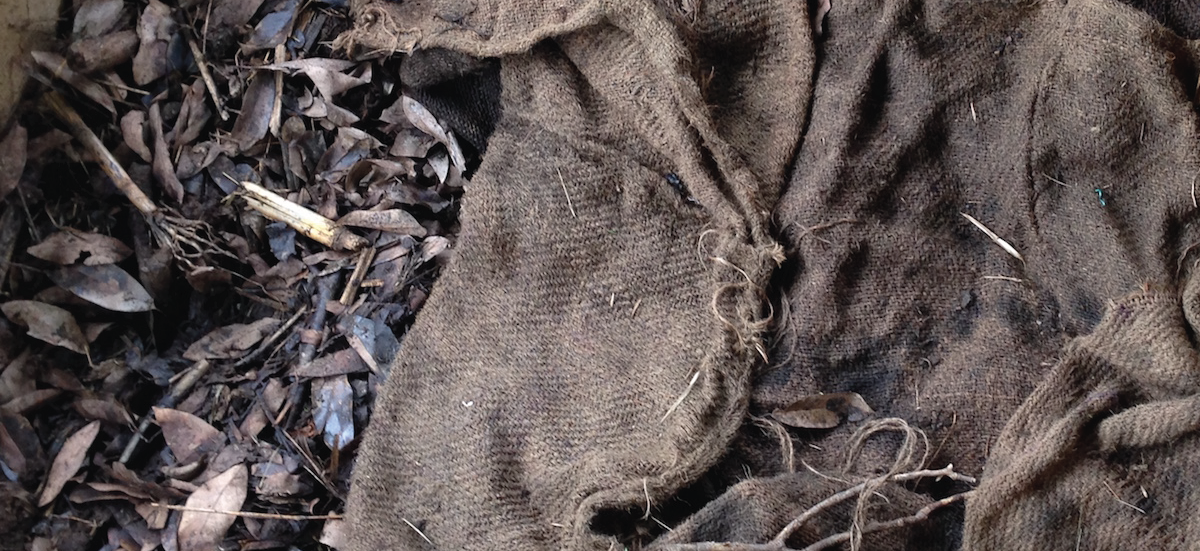
Bacterial and fungal composts
“The best fertiliser for the land is the farmer’s footsteps”
– Confucious
Any farm or forest begins by work on its soil. To be able to apply methods and techniques to develop soil, it is crucial to first understand the nature of the soil and its qualities. The better the farmer is able to assess the soil, the more effective are the techniques used to make it better.
Since thousands of years, farmers have assessed and understood their soil as an extension of their own bodies and lives and have intuitively made adjustments to their methods to preserve its health. Since the green revolution, soil health has been reduced to numbers and the qualities of the soil to a list of nutrients and chemical properties which can only be tested in a laboratory. This has further disempowered the farmer from having a direct connection with the living aspect of the soil.
METHODS FOR HOLISTIC ASSESSMENT OF SOIL
Senses
Direct perception
Working with soil requires a lot of observation and using direct perception using all our senses to continuously assess the nature and health of the soil.
We should train ourselves to,
see the structure of the soil and its colour, the life that exists in it and its diversity,
feel the moisture in the soil, its composition of mineral particles (sand, silt, clay) and the organic material,
smell the aerobic activity of the soil,
taste the richness of the soil in the food grown in it,
hear the diversity of birds and insects that can only exist in a balanced ecosystem.
Developing our senses to assess the soil this way will help to build a living connection with the soil which is fundamental for a sustainable farm and a sustainable farmer.
Jar test
The physical nature of the soil

Using a simple jar, it is easy to determine the structure and the physical components of the soil.
Take a soil sample by digging at least 3-4 inches from the surface (all layers from surface to 3-4 inches deep included). Fill half the jar with this sample. Fill half of the space left in the jar with water. Close the lid and shake vigorously to ensure that all the soil particles are suspended in the water. Keep the jar overnight on a perfectly flat and leveled surface. If distinct layers are not visible, try again after adding half a tablespoon of any soap powder. Soap decreases the surface tension of water and thus allows better wetting and mixing of the soil particles.
Microscopy
The biological nature of the soil

At a scale, unseeable to the human eye, exists a world of tiny beings working constantly and tirelessly to create and maintain the soil ecosystem. They form the soil food web and decide the nature of the soil.
Their world is fascinating and tells a lot about the health of the soil, its strengths, and weaknesses.
Soil microscopy helps to determine the level of the succession of the soil and can be used as an excellent tool to educate farmers and forest workers about soil biology. Peering through that lens makes us aware of our limitations of perception and teaches us about the fantastical interconnectedness of beings in our ecosystem.
Laboratory tests
The chemical nature of the soil
Soil testing laboratory will assess the soil for its chemical composition. Although informative, it alone cannot form the basis for planning soil amendments.
Chromatography
The etheric nature of the soil


Ehrenfried Pfieffer, a german soil scientist and a researcher of the Anthroposophical thought and Biodynamic agriculture was the pioneer in applying the chromatography technique for soil assessment. He developed this technique in the early 1900s.
Besides distinct indentification characteristics, the chromatogram gives a snapshot of the nature of the soil. The more harmonious the chromatogram, the healthier the soil.
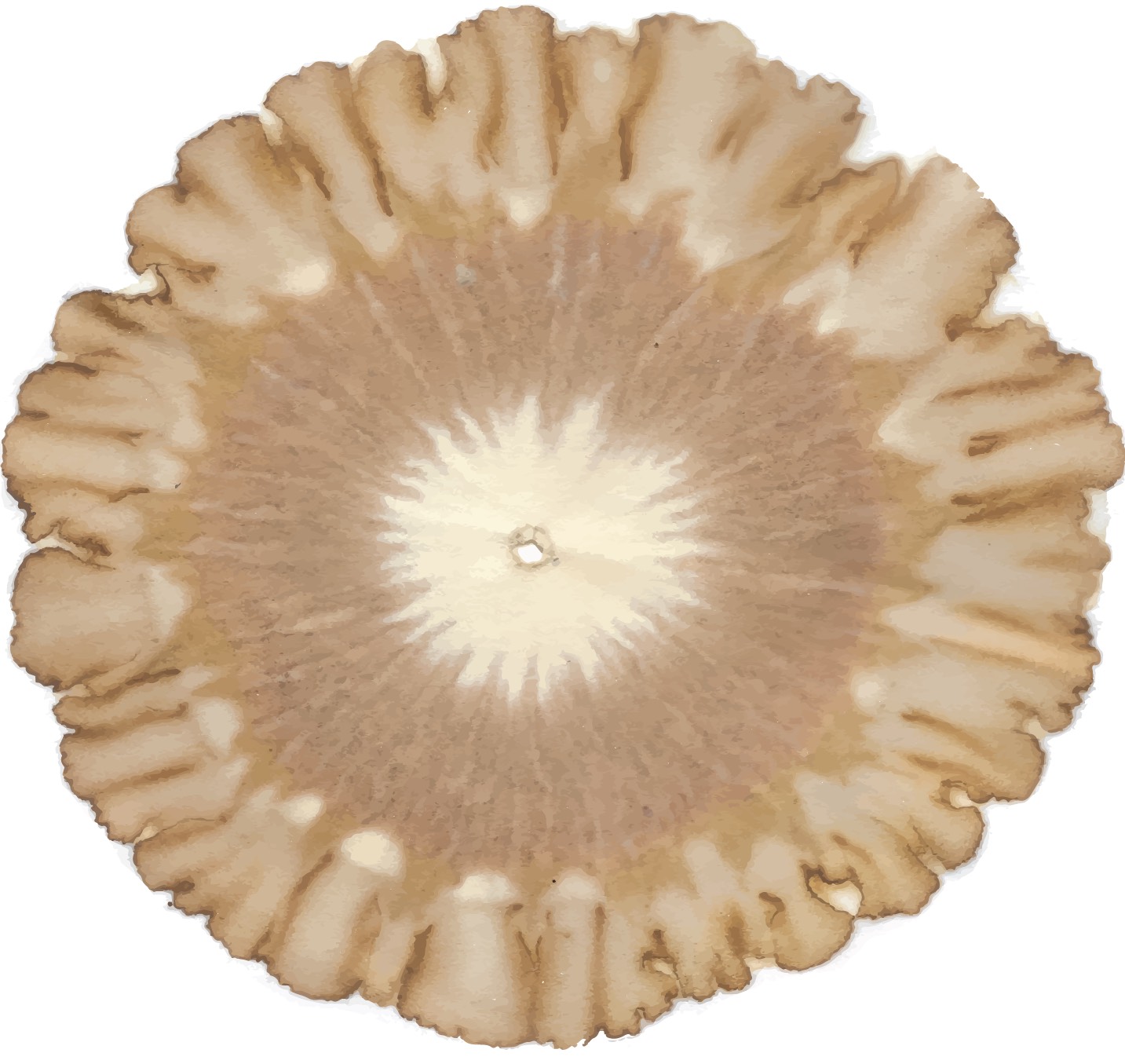
A chromatogram of soil from Shunya farm, Bir made in Spring 2019
Identification characteristics:
Central zone
Oxygenation of soil
Inner zone
Mineral content and fungal activity
Intermediate zone
Organic matter content
External zone
Bacterial enzyme activity
Radials
The lines from the center to the external zone
Terminal nodes/Teeth
The ends of the external zone
More on soil:
SOIL / physical / texture and structure
